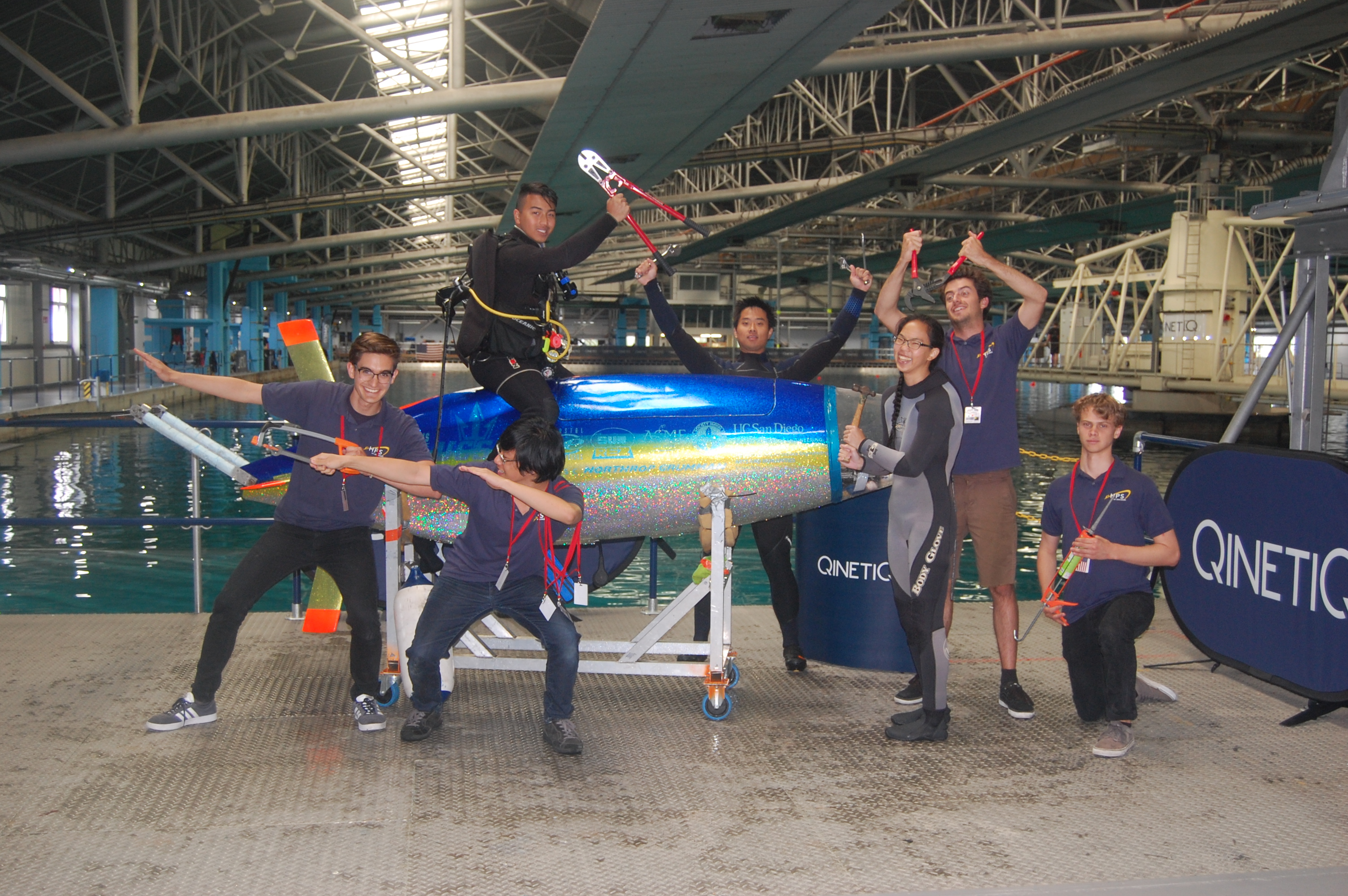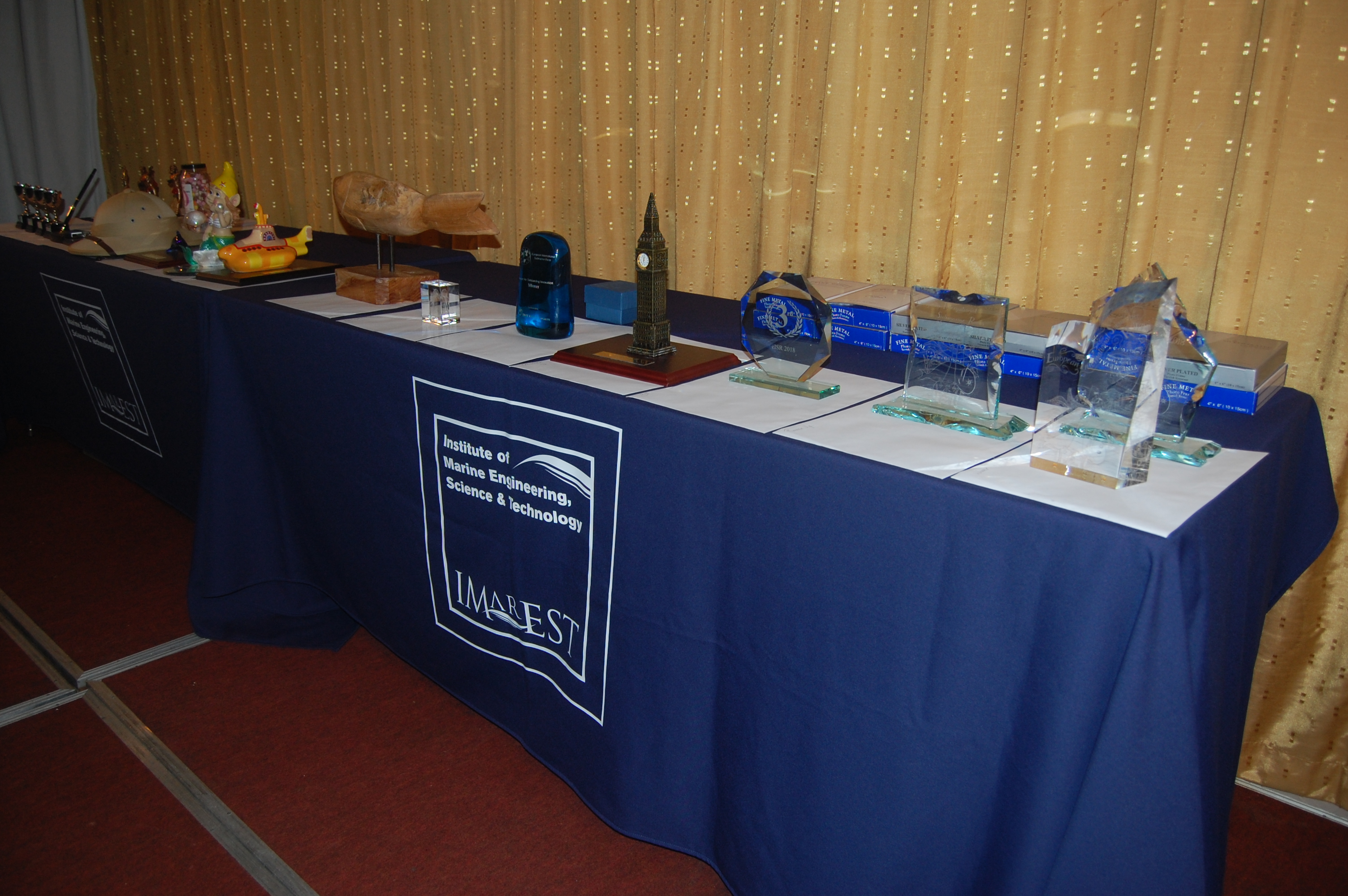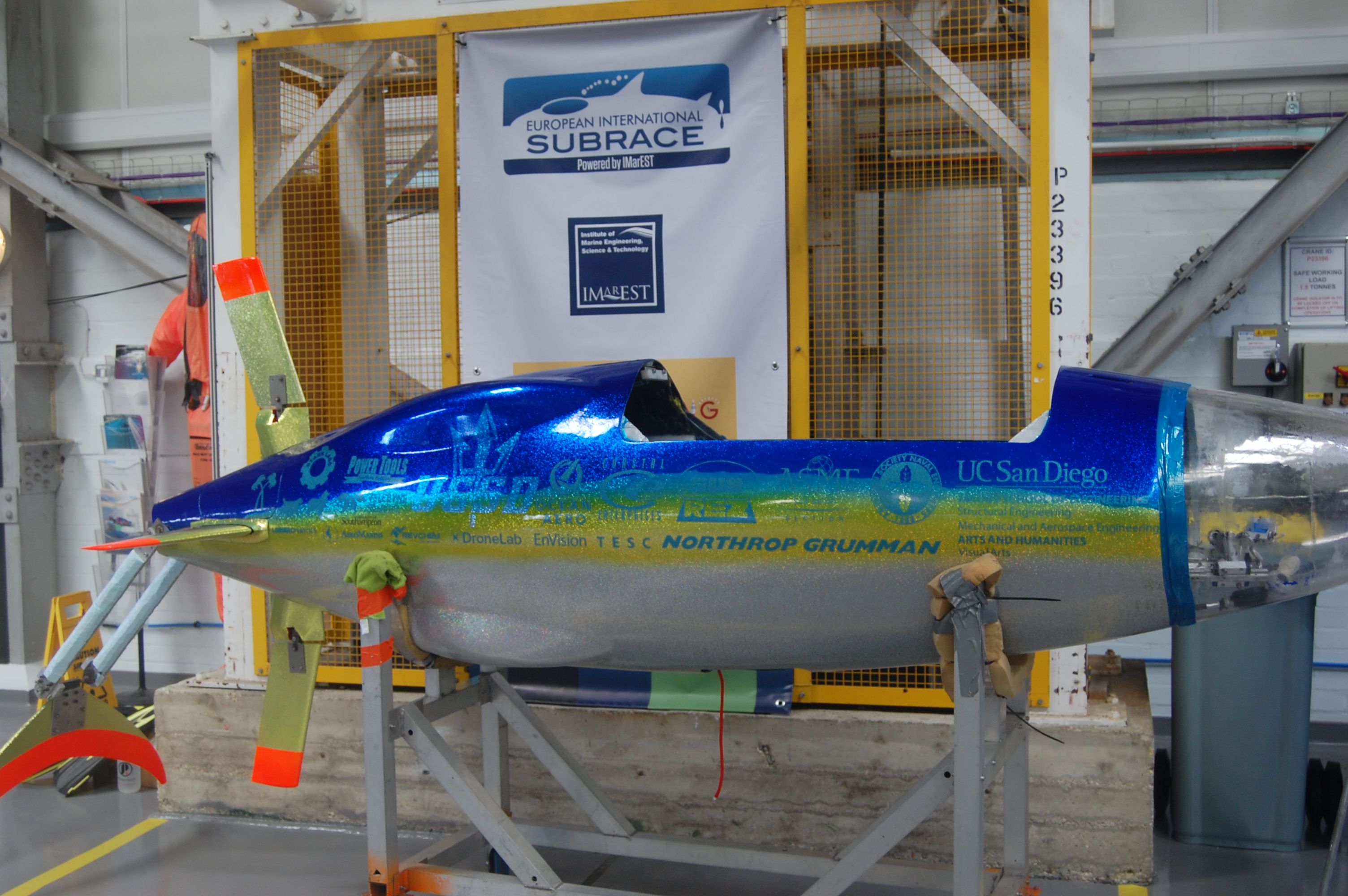We previously showed you how a team of engineering students from UCSD designed and fabricated a unique human-powered submarine as part of their classroom learning experience. Instead of using a rotary propeller, they took a cue from marine life and designed a dolphin fin propeller. The students then competed at the European International Submarine Races in Gosport, England back in July. Here is a write-up from Tobin Gutermuth, the team captain, about their experience.

In Tobin Gutermuth’s own words…
As many of you know UCSD HPS made it to the European International Submarine Races for the first time this year. Myself and six other teammates attended the event held at Qinetiq Ocean Basin in Gosport England from July 3rd- July 14th. We stayed in Kingfisher caravan (trailer) park next to the beach in Gosport with race officials and 11 other teams from around the world.
From 9am to 4pm teams would fix, modify, and race their submarines in the amazing Qinetiq Ocean Basin. The pictures do not do the basin justice. Diving and racing in the perfectly still crystal clear water of the basin was such a unique opportunity which we would not have without the generousity of Qinetiq, and the dedication of the race organizers who volunteer their time to put on this fantastic event. It was really amazing to see the fully flooded submarines start off perfectly still, suspended in the body of water (near a half ton of neutrally buoyant mass), then accelerate off of the start line like a torpedo or in our case like a dolphin. The race course was made up of a straight away with a timing trap, u turn, and back through a slalom course.
At 4pm all teams returned to the trailer park. There we got to know the various teams, sharing meals, drinking cheap beer, and hanging at the beach. IMarEST and the race organizers also held several events including a BBQ the first night, a lecture on Submarine design at the Portsmouth historic dockyards, an open house where the teams presented their designs to the public and to eachother poster board style, a tour of the Royal Navy Submarine Museum where we got to walk through the HMS Alliance, the only remaining WW2 era submarine (a real highlight of the trip), and a talk on deep ocean exploration.

On the last Friday of competition everyone attended a black tie event at a hotel in downtown Portsmouth with three course dinner and open bar, how the British Royal Navy does it. Before dinner we had an award ceremony. Vaquita got 7th place out of the 12 submarines. The judging was based on Design Report, Dry Inspection (where the quality of our design and build were judged), Wet Check (where each team had to demonstrate their pilot Safety Buoy function and pilot escape underwater), Race Performance, and Reliability. Unfortunately the performance and reliability of our submarine was severely impacted by a poor choice in buoyancy foam. The foam we used compressed at depth in the ocean basin. So, even though we were correctly trimming the submarine at depth, as soon as the depth changed (i.e. the submarine coming closer to the surface), the foam expanded and made the submarine increasingly buoyant, sending our sub up to the surface. We failed to notice this design flaw during testing because we only went a short distance in the school pool and the pilot stayed at a relatively constant depth.
Nonetheless, we still managed to cross the finish line four times, albeit at the surface. All the other systems in the submarine (drivetrain, steering, safety) were functioning normally. While we couldnt see the full potential of our propulsion and steering systems, we were glad to have completed several races at EISR, including navigating the slalom course. While we wish we could have performed better, we know that this project is really about learning and we certainly learned a ton this year.
Vaquita was also awarded with the most unusual design award. Of the 12 submarines there were only three non propellor subs. The other two non propellor subs used Hobie Mirage drive propulsion systems. We received a lot of enthusiasm from the judges and other teams about our unique design.

The spirit of the races is all about camaraderie, having fun, and learning. Teams shared tools, divers, and tips/experience about how to improve subs, manage teams, and fundraise. We are a small community of human powered sub engineers. I hope that UCSD will attend the European races for many years to come. Next year the team will be lead by 3rd year Xander Westra, the propulsion lead from Vaquita. The team will likely reuse the same hull and focus on building a stronger team mentoring new members by having them improve existing systems. The team plans to attend the submarine races at in Maryland next summer.
Big thanks to all our corporate and school sponsors this year:
UCSD Jacobs School of Engineering
American Society of Naval Engineers, San Diego Section
American Society of Mechanical Engineers, San Diego Section
UCSD Mechanical and Aerospace Eng. Dept.
UCSD Structural Eng. Dept.
Northrop Grumman
SunRez
Oceanaero
Coastal Enterprises
UCSD Structural Engineering Undergraduate Development Labs
UCSD MAE Machine Center
UCSD Visual Arts Department
Triton Engineering Student Counsel
UCSD Drone Lab
Lormac Plastics
Teledyne Seabotix
Aeromarine
UCSD Envision Makerstudio
Revchem Composites
Fiberlay
Coastal Enterprises manufactures Precision Board HDU, a high-density urethane material used extensively in the tooling industry. It is a closed-cell rigid material that does not rot, warp or crack.
Coastal has a long tradition of donating Precision Board HDU to schools around the country in support of the next generation of engineers, designers and artists working in composites. If you are interested in finding out more about our Precision Board school donation program, check out our School Donation page and get in touch with us to see how we can help your program out.
You can read part 1 of this blog HERE where they describe the process of using Precision Board HDU to create the molds for the submarine.